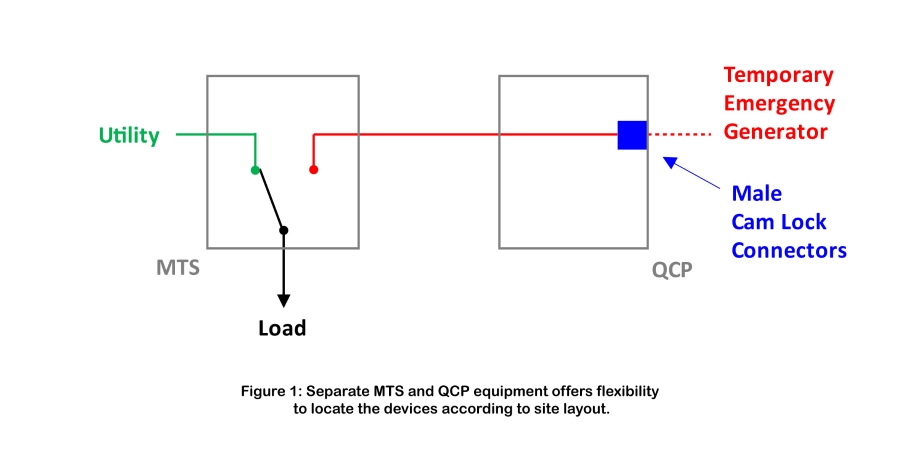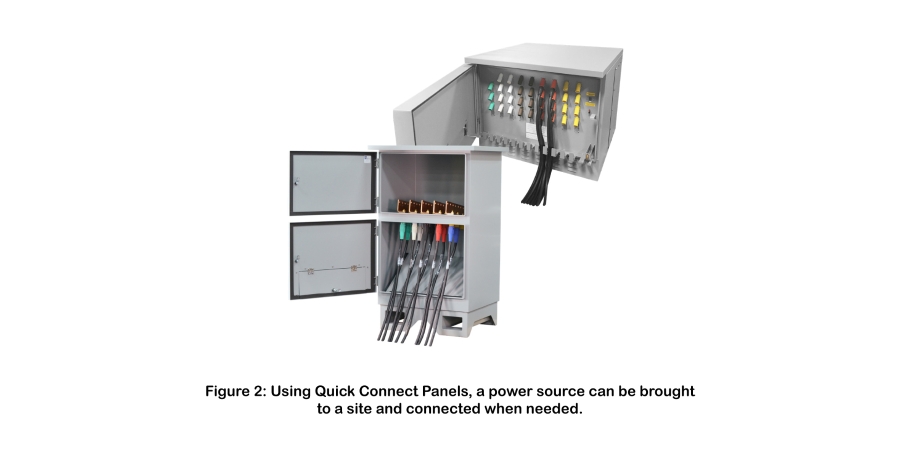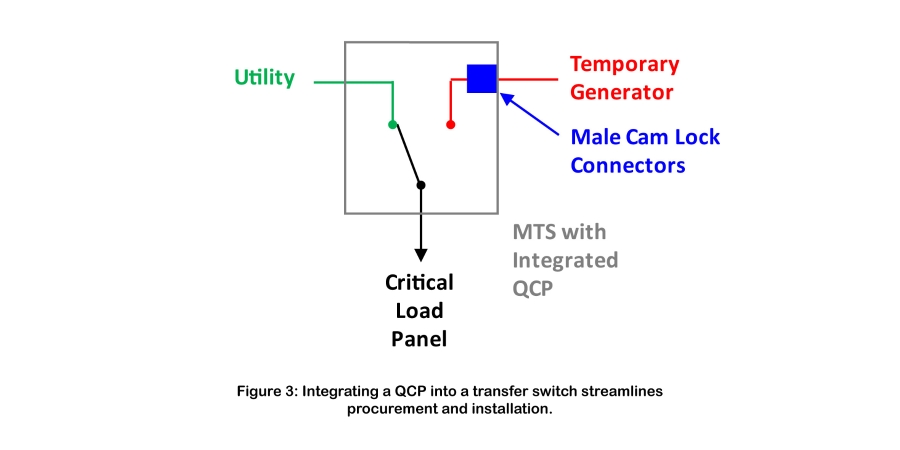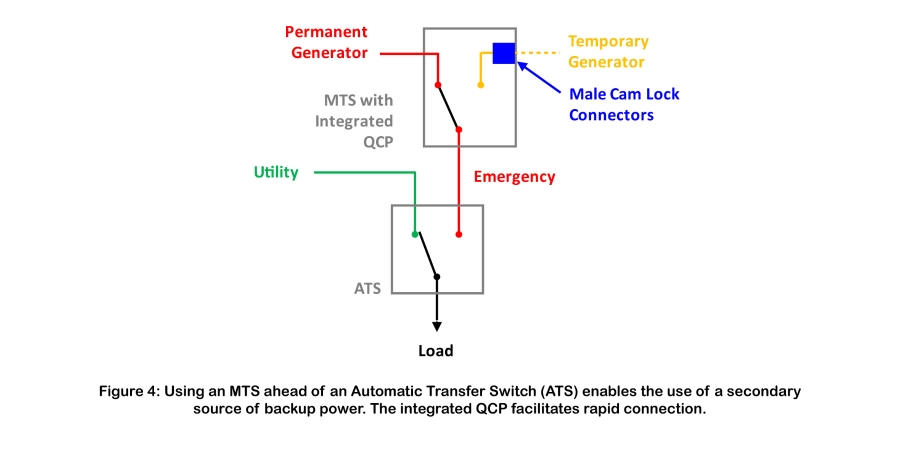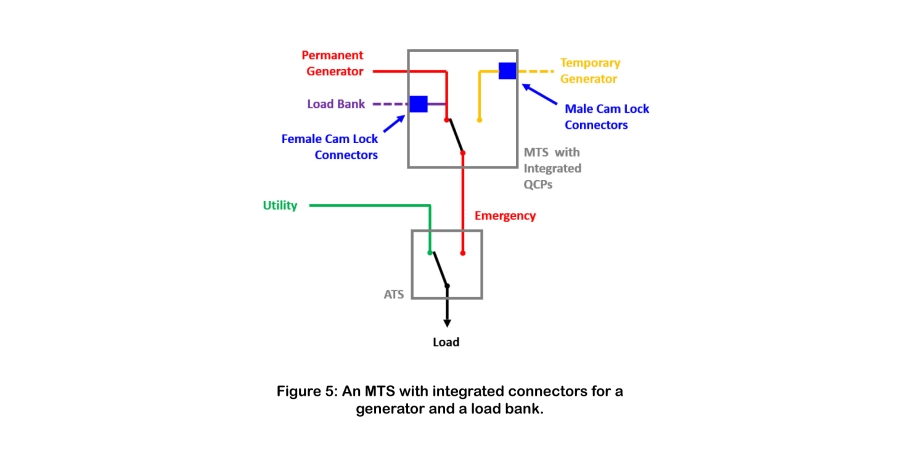Small and mid-size businesses need access to backup power at reasonable cost. Facilities with mission-critical loads need a second generator when they take their sole generator offline for service. Some facilities need to comply with requirements for periodic testing without overinvesting in load test equipment. This brief explains how connections for temporary critical power equipment can help meet these needs.
Simple Access to Backup Power
For some small and midsize facilities, a permanent generator system for backup power may be too costly. However, these facilities can access backup power at lower capital cost by installing a Manual Transfer Switch (MTS) and a Quick-Connect Panel (QCP). These panels utilize standard cam lock receptacles (Figure 2) that enable rapid connection to a temporary generator when needed, one that can be transported to a site when utility outages occur. Figure 1 shows such an arrangement.
Simple Access to Backup Power
For some small and midsize facilities, a permanent generator system for backup power may be too costly. However, these facilities can access backup power at lower capital cost by installing a Manual Transfer Switch (MTS) and a Quick-Connect Panel (QCP). These panels utilize standard cam lock receptacles (Figure 2) that enable rapid connection to a temporary generator when needed, one that can be transported to a site when utility outages occur. Figure 1 shows such an arrangement.



